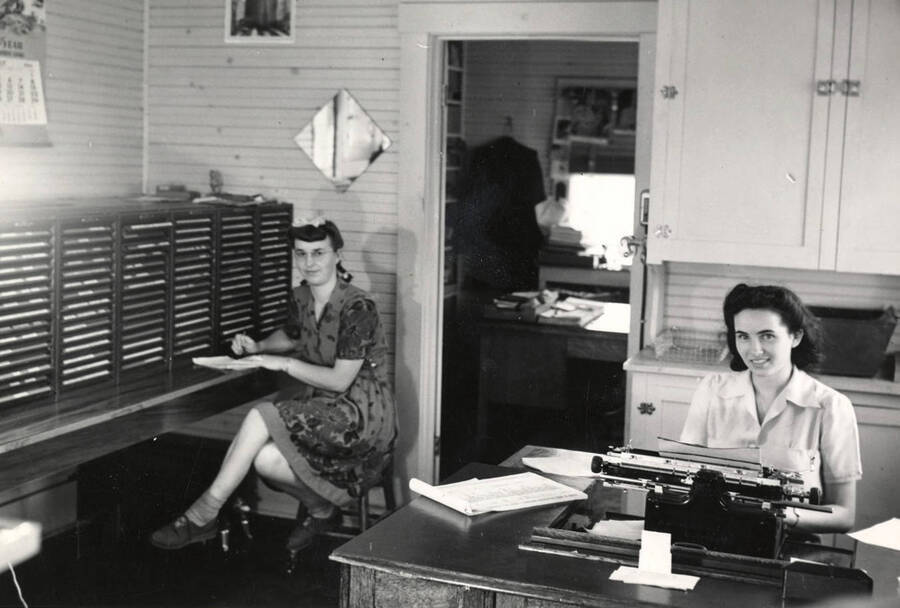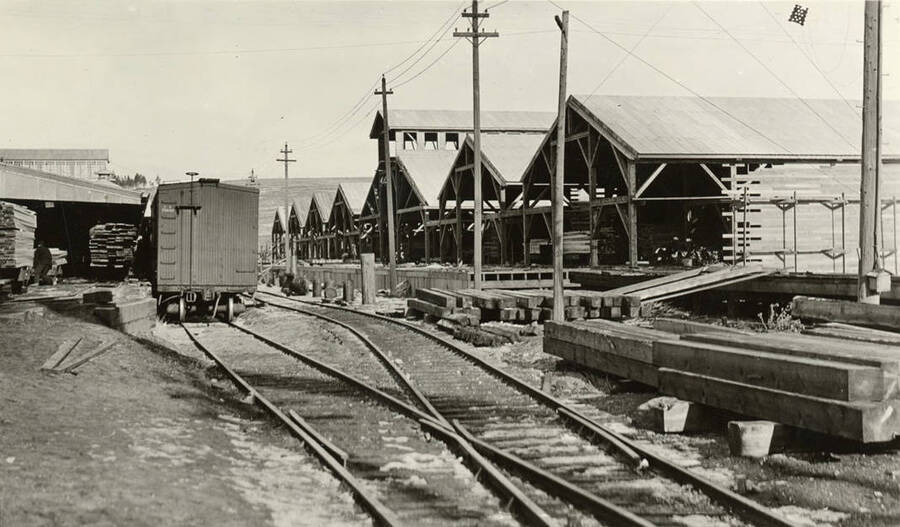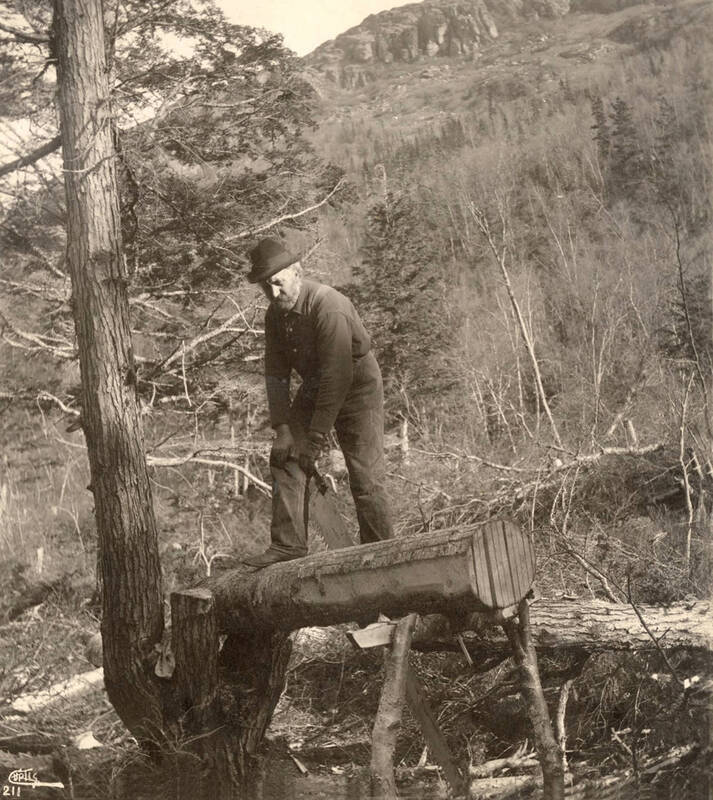Potlatch Lumber Company Photograph Collection
A collection of over 1500 photographs from the Potlatch Lumber Company
Contents: About the Collection | A Brief History of Potlatch Lumber Company | References | Tech
Archival Context
For a detailed description and inventory of all Potlatch collections, see our Potlatch Corporation Historical Archives, 1900-2007 finding aid & Potlach Lumber Company Records, 1890-1949 finding aid. Both of these collections are held by the University of Idaho Special Collections and Archives.
About the Collection
The photos in this collection are compiled from two different collections housed in the UI Library Special Collections—Potlatch Lumber Company Records, 1901-1979 (MG 135) and Potlatch Corporation Historical Archives, 1900-2007 (MG 457). Due to the inter-relationship of the Potlatch organization, photos in this collection also feature other operations in Latah, Nez Perce, and Clearwater counties.
The records and photographs belonging to the Potlatch Lumber Company were donated to the University of Idaho by the Potlatch Corporation in November, 1983.
A Brief History of Potlatch Lumber Company
The Potlatch Lumber Company was incorporated in 1903 by several men - Frederick Weyerhaeuser and other investors who collectively founded the Clearwater Timber Company in 1900.1 The town of Potlatch, Idaho, was founded as a “company town” in 1905 because the lumber company had become so successful and large.2 The Potlatch Lumber Company quickly became the “largest white pine mill in the world” with their first sawmill being built in Potlatch, Idaho along the Potlatch River.1
Potlatch Lumber Company maintained a close relationship with the Clearwater Timber Company (founded in 1900) and the Rutledge Lumber Company (founded in 1915).1 The three companies merged their “mills and forestland holdings” into the Potlatch Forests, Inc. (PFI.).1
During WWII, Potlatch Forests, Inc. “joined the war effort by directing its traditional products toward military end uses” and “with men at war, women took production jobs in the mills.”1
After WWII, the housing market boomed and Potlatch Forest, Inc. built their first plywood plant in Lewiston, Idaho in 1949 to help “fill the need for building materials.”1 In the 1950s, PFI “grew and expanded production in Idaho and other states, and into new businesses such as packaging and real estate” and eventually merged with two other companies, Southern Lumber Company and Bradley Lumber Company in Arkansas.1 By the 1960s, PFI had “expanded its operations and holdings through 24 acquisitions, maintaining offices or facilities in 25 cities, 12 states and three foreign countries.”1
However, the company struggled in the 1980s as the housing market oscillated between boom and bust. As a result, “the original Potlatch and Rutledge mills, now outdated, were closed and other Potlatch-owned mills in Idaho were sold or closed. The Rutledge site later became the Coeur d’Alene Resort and Golf Course.”1
The company sought to “modernize” processes, technologies, and markets throughout the 1980s and 1990s to address “on-going economic and industry changes.”1 Throughout the 2000s and 2010s, Potlatch acquired and divested various lands around the country.1
In 2018, the company merged with “Arkansas-based Deltic Timber in an all-stock transaction, creating a leading domestic timberland owner and top-tier wood products manufacturer.” As a result, the consolidated company was renamed “PotlatchDeltic Corporation.”1
Though the population of Potlatch has dwindled over the years since the mill’s closure, Potlatch remains a bedroom community for the university towns of Moscow, Idaho (University of Idaho) and Pullman, Washington (Washington State University).
Fun Facts
- The name “Potlatch” was borrowed from the Chinook word for a Native American celebration of goodwill and gift giving.[^1]
- Charles Weyerhaeuser, son of Frederick Weyerhaeuser, was the first president of Potlatch Lumber Company.
- The Potlatch Lumber Company believed that a company town was a necessary investment and a proper step in labor relations and community improvement. When the mill began operating in the fall of 1906, the town consisted of two boarding houses, two schools, a hotel, two churches, a mercantile, bank, post office, and an opera house. Bars and saloons were prohibited in the town, as was gambling. Potlatch attracted many settlers and immigrant families looking for work. The town grew quickly and, for a time, was the second largest town in Latah County.
References
-
“History,” Potlach Deltic, https://www.potlatchdeltic.com/Page/ViewPage/12 (Archived: https://perma.cc/KL6R-3F8G) ↩ ↩2 ↩3 ↩4 ↩5 ↩6 ↩7 ↩8 ↩9 ↩10 ↩11 ↩12
-
“Company Town-Potlach Idaho,” Waymarking.com, https://www.waymarking.com/waymarks/WMAAJR_Company_Town_Potlatch_Idaho (Archived: https://perma.cc/6HCM-CDHY) ↩
Technical Credits - CollectionBuilder
This digital collection is built with CollectionBuilder, an open source framework for creating digital collection and exhibit websites that is developed by faculty librarians at the University of Idaho Library following the Lib-Static methodology.
Using the CollectionBuilder-CSV template and the static website generator Jekyll, this project creates an engaging interface to explore driven by metadata.



